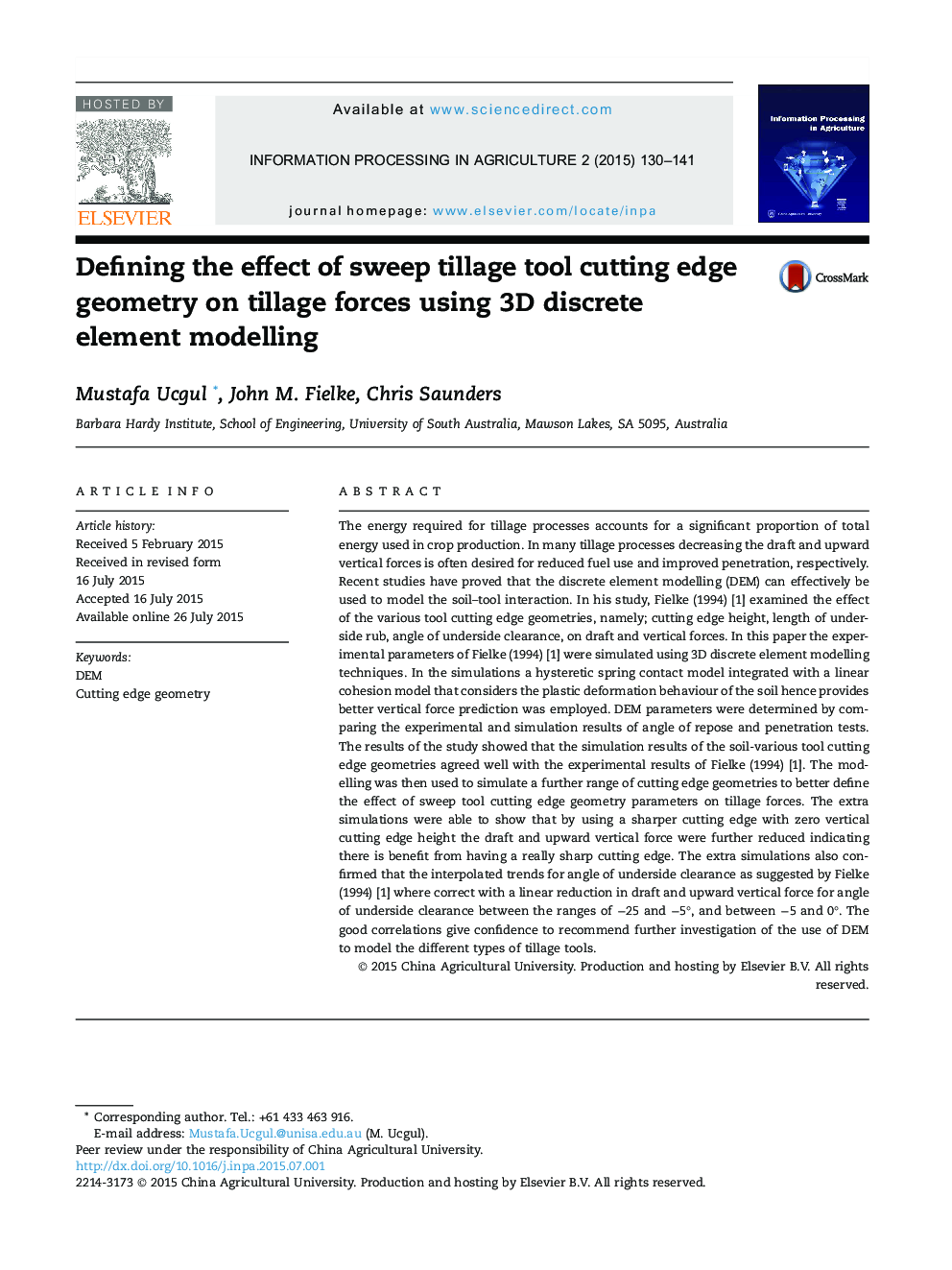| کد مقاله | کد نشریه | سال انتشار | مقاله انگلیسی | نسخه تمام متن |
|---|---|---|---|---|
| 4493354 | 1318625 | 2015 | 12 صفحه PDF | دانلود رایگان |
• Soil can be modelled using linear cohesion integrated hysteretic spring contact model.
• DEM is able to model the soil–tool cutting edge interaction.
• DEM can be used to optimise the tool geometry.
The energy required for tillage processes accounts for a significant proportion of total energy used in crop production. In many tillage processes decreasing the draft and upward vertical forces is often desired for reduced fuel use and improved penetration, respectively. Recent studies have proved that the discrete element modelling (DEM) can effectively be used to model the soil–tool interaction. In his study, Fielke (1994) [1] examined the effect of the various tool cutting edge geometries, namely; cutting edge height, length of underside rub, angle of underside clearance, on draft and vertical forces. In this paper the experimental parameters of Fielke (1994) [1] were simulated using 3D discrete element modelling techniques. In the simulations a hysteretic spring contact model integrated with a linear cohesion model that considers the plastic deformation behaviour of the soil hence provides better vertical force prediction was employed. DEM parameters were determined by comparing the experimental and simulation results of angle of repose and penetration tests. The results of the study showed that the simulation results of the soil-various tool cutting edge geometries agreed well with the experimental results of Fielke (1994) [1]. The modelling was then used to simulate a further range of cutting edge geometries to better define the effect of sweep tool cutting edge geometry parameters on tillage forces. The extra simulations were able to show that by using a sharper cutting edge with zero vertical cutting edge height the draft and upward vertical force were further reduced indicating there is benefit from having a really sharp cutting edge. The extra simulations also confirmed that the interpolated trends for angle of underside clearance as suggested by Fielke (1994) [1] where correct with a linear reduction in draft and upward vertical force for angle of underside clearance between the ranges of −25 and −5°, and between −5 and 0°. The good correlations give confidence to recommend further investigation of the use of DEM to model the different types of tillage tools.
Journal: Information Processing in Agriculture - Volume 2, Issue 2, September 2015, Pages 130–141
